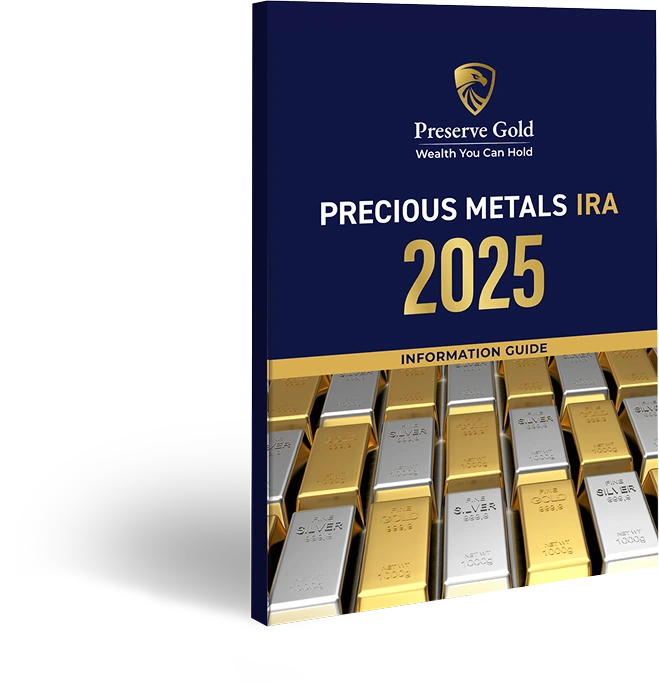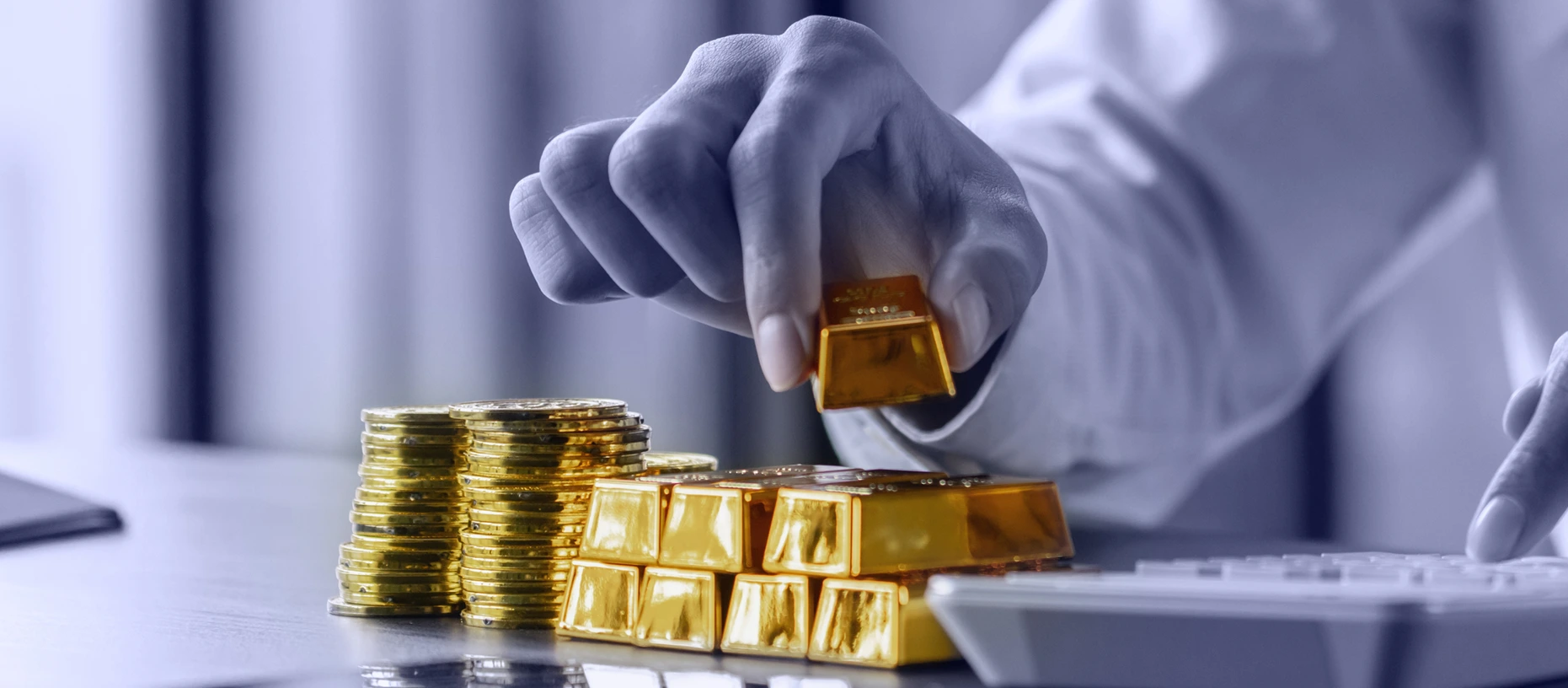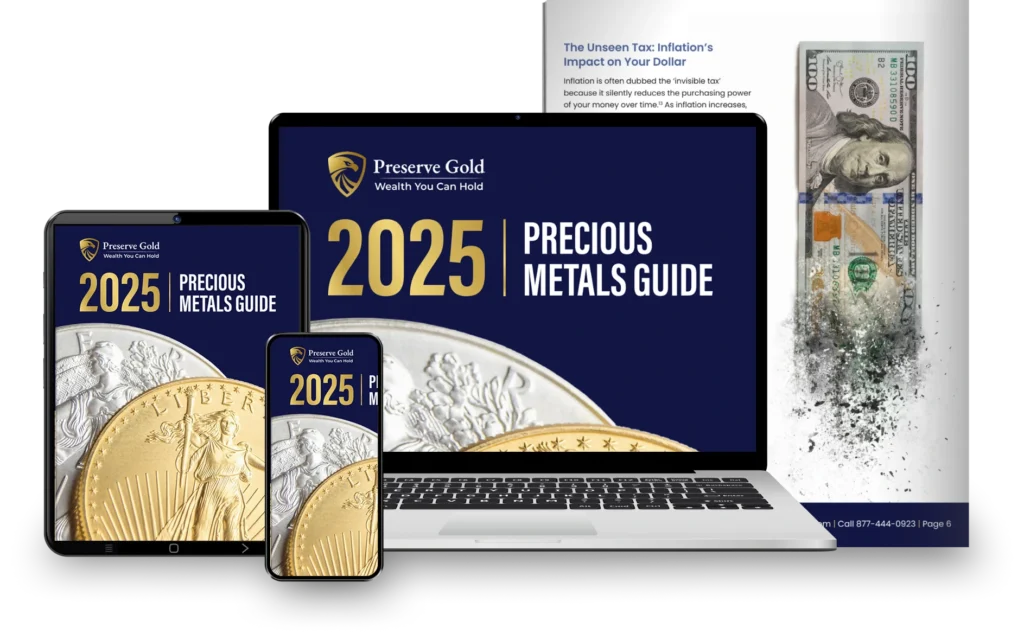In an endless sea of options, precious metals — such as gold, silver, platinum, and palladium — stand out as one of the few remaining honest stores of wealth. These metals have been considered symbols of prosperity and stability for centuries, with their value standing the test of time.
Investors have more choices than ever. From stocks and bonds to real estate and cryptocurrency, the list of financial opportunities is long, but not all offer the same stability, predictability, and economic protection. With inflation and economic uncertainty at the forefront of their minds, many are rethinking where they should place their trust.
Rather than taking on unnecessary risk, consider a more timeless classic: precious metals.
Diversify Your Investment Portfolio
Over 40% of American investors don’t actively monitor their portfolios, which can lead to overconcentration in a single asset class, increasing exposure to unnecessary risk.
Diversification is a cornerstone of smart investing. By including non-correlated assets like gold, silver, platinum, and palladium, investors can spread risk more evenly and reduce the likelihood of steep losses during market downturns.
Precious metals often behave differently from stocks, bonds, and other traditional assets. This low correlation means that when one part of your portfolio is struggling, metals may help offset the damage, smoothing out returns and enhancing overall resilience.
They’re not just a fallback during crises but a proactive way to strengthen your financial strategy. By allocating even a portion of your holdings to physical metals, you gain a layer of protection that helps you stay more balanced, prepared, and confident in the face of market volatility.
Hedge Against Inflation
Unfortunately, inflation is hurting Americans and, more specifically, American investors, across the board. It has eroded the value of paper money, including the U.S. Dollar, and negatively impacted many other assets.
If you are asking yourself, “Why invest in precious metals?” know this: Options like gold and silver have often increased in value when inflation has hit the U.S the hardest. In most cases, the value of precious metals has gone up during economic downturns, counteracting the loss in value of fiat currency.
The price of gold, in particular, tends to increase as the country’s cost of living rises. Historical data from 1974 to 2008 demonstrate that gold prices, on average, surged by nearly 15% during the eight years characterized by the highest inflation rates. Its value soared during recessions in 2001, 2007, and 2020, suggesting it could effectively hedge against inflation now, in the future, and beyond.
Investors have routinely relied on precious metals like gold when the American economy has faltered, earning it the title of the “ultimate safe-haven asset” in more than a few instances. As former Chair of the Federal Reserve, Alan Greenspan, once famously remarked, “In the absence of the gold standard, there is no way to protect savings from confiscation through inflation.” Any time fiat currency devaluation occurs, investors have been known to stockpile gold along with other precious metals options.
Enjoy Tangible Assets You Can Hold
Think about the last time you paid for something in cash—it’s becoming increasingly rare.
Fewer people are using tangible currency than ever before. Surveys have shown that over 40% of people report not paying for anything with cash during the average week.
As the U.S. inches closer to becoming an entirely cashless society, many fear a collapse of digital currency in which their treasured digital assets become obsolete.
With precious metals, investors can touch, move, and store their assets. With the spot price of gold and other metals constantly fluctuating, owners can move in and out of the market quickly, allowing them to capitalize on value shifts and take advantage of lucrative opportunities as they arise.
Plus, precious metals like gold have an incredibly rich history of use as a store of value, which means they don’t carry the risks associated with digital assets. You won’t have to worry about cyber threats, institutional failures, or other technological perils affecting them. You can take your gold directly to a buyer and sell it when you are ready to liquidate it.
While other asset classes may come and go, precious metals have remained a constant throughout history — a testament to their enduring value and appeal.
Alternative To Fiat Currency
Many factors distinguish precious metals from fiat currency. To start, gold and silver have been around much longer than fiat currency, as they have been globally recognized for centuries.
Here are several other factors that separate them:
- Governments create fiat currency that loses purchasing power over time, while precious metals have inherent values that tend to increase over the long term.
- Governments can print more fiat currency, but they can’t pull precious metals out of thin air, limiting their supply and making them more valuable.
- Fiat currency has few practical purposes, while precious metals are indispensable in many industries. Their demand has risen over time as they have become more useful in the medical, technology, aerospace, and jewelry sectors, among others.
However, the most significant difference between these assets is that, without the backing of a commodity such as gold, fiat currencies are based on the faith and credit of the issuing government. As such, their purchasing power is tied to underlying economic fundamentals, putting them at a distinct disadvantage compared to precious metals.
Ease Of Investing
Now that you know the answer to the question, “Why invest in precious metals?” you may wonder how you can start adding them to your portfolio. It’s simple to do so by taking the following steps:
- Pick a precious metal: Gold? Silver? Platinum? Palladium? Each of these options offers unique benefits. Determine which fits into your financial plans by speaking with a Preserve Gold Precious Metals Expert. We will guide you through the distinctions between each metal.
- Settle on a secure storage option: You can store precious metals in a home safe, a vault, or even an insured depository. Which one would you prefer?
- Decide between personal ownership or a Precious Metals IRA: Are you looking to help protect your cash savings against inflation, or are you looking for portfolio diversification? The experts at Preserve Gold can help you make a direct purchase or assist with establishing a Precious Metals IRA.
- Work with a trusted dealer: Ensure fair pricing and secure transactions by handpicking a reputable dealer like Preserve Gold. We are consistently ranked as the leading precious metals provider in the United States and offer a wide range of trusted precious metals products delivered to your door or retirement account.
- Monitor the value of your investment: Keep tabs on these interactive price charts to determine the right time to sell.
Why Right Now Is The Right Time To Invest In Precious Metals
People worldwide have been investing in precious metals for thousands of years. So, why invest in them now?
Here are just a few reasons:
- Global economic uncertainty is elevated and may worsen with time.
- Inflation is rising, decreasing purchasing power.
- Debt continues to skyrocket and might not stabilize anytime soon.
Notably, a World Gold Council report just revealed that global banks are dramatically increasing their gold reserves to prepare for a potential gold rush.
Why not follow their lead? The longer you wait, the higher the prices of gold and other precious metals could go.
Start Investing Today
The benefits of precious metals extend beyond their intrinsic value; they offer stability and security when uncertainty abounds. It’s time to consider investing in gold, silver, platinum, and palladium. Let Preserve Gold guide you every step of the way.
Call us at (866) 202-0770 or fill out our form below to request our Precious Metals Guide.





